If I were to pick one thing in Rajasthan that charmed to no end, I will have to point at the desert landscapes. Next comes Chhatris. The simple, yet elegant canopies that served as pavilions, galleries, design elements in building architecture and also as memorials for the dead are ubiquitous all across Rajasthan. It is perhaps the placement of chhatris in relation to each other and within the context of a larger building that makes them appear grand and beautiful, than as stand alone elements. The rising chhatris in the corners of palaces and a series of them in the pathways are perhaps the most standard placements seen in the ancient buildings. When built as memorials, they stand out independently and often in randomly built clusters.
Perhaps it is best to quote from wikipedia and leave it at it, since my knowledge of history and architecture of these structures is very limited.
“Chhatris are elevated, dome-shaped pavilions used as an element in Indian architecture. Chhatris are commonly used to depict the elements of pride and honor in the Rajput architecture of Rajasthan. They are widely used, in palaces, in forts, or to demarcate funerary sites. Originating in Rajasthani architecture where they were memorials for kings and royalty, they were later adapted as a standard feature in all buildings in Rajasthan, and most importantly in Mughal architecture. They are today seen on its finest monuments, Humayun’s Tomb in Delhi and the Taj Mahal in Agra. Chhatris are basic element of Hindu as well as Mughal architecture.”
Here is a set of images of Chhatris I made during a photography tour to Rajasthan last year. I loved these structures so much, that I yearned to spend days together experimenting compositions. But I would have been murdered by other photography enthusiasts in my group, had I done so and kept them waiting.
Click on the images to see them in full size.
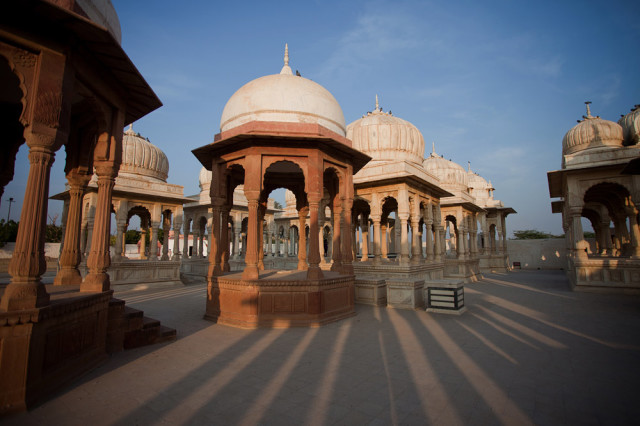
If there is one place in Rajasthan where I immensely enjoyed photographing the chhatris, it is Devi Kund, just outside Bikaner. The enclosure at Devi Kund has a large number of chhatris built in memory of kings of Bikaner. Some of them are neatly built in rows while some more more are randomly located. It is a beautiful sight to see during the hours of sunrise and sunset. And the patterns, shades and contours created by a combination of chhatri arrangements and changing light make the place a photographers delight and a place worth observing the whole day.
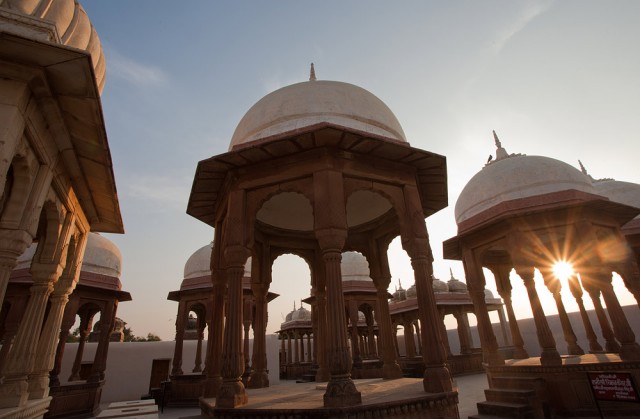
Sun rays penetrating the chhatris at Devikund, Bikaner.
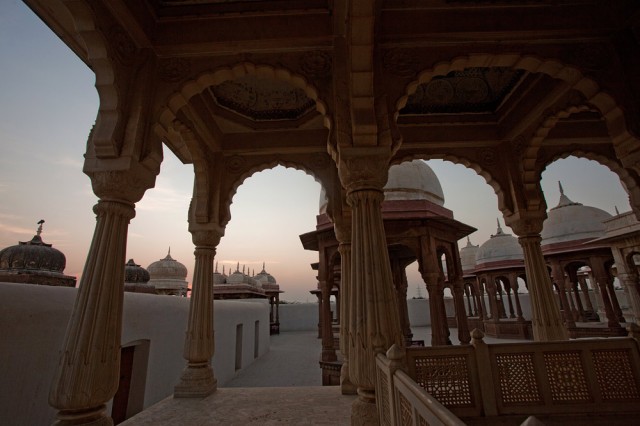
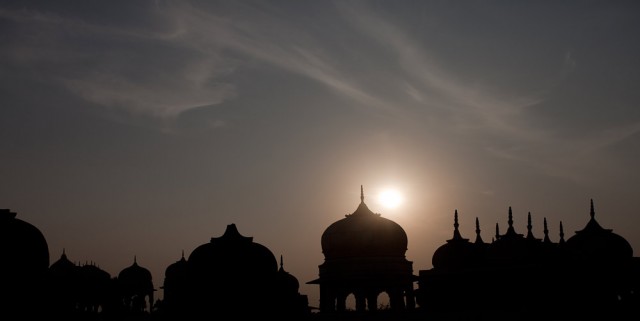
The memorial for Kings of Jaipur at Gaiter Village was my first introduction to a cluster of chhatris. Unlike Devi Kund, the chhatris here are spread randomly in multiple clusters. While Devi Kund’s chhatris can be a delight to see with their uniformity and repetitive patterns, Gaiters chhatris stand out in their size and grandness. Several chhatris here have intricate marble carvings depicting the stories from Indian mythology. A sense of grandness and a princely touch is apparent in their structures, which I hoped to capture with the photograph below.
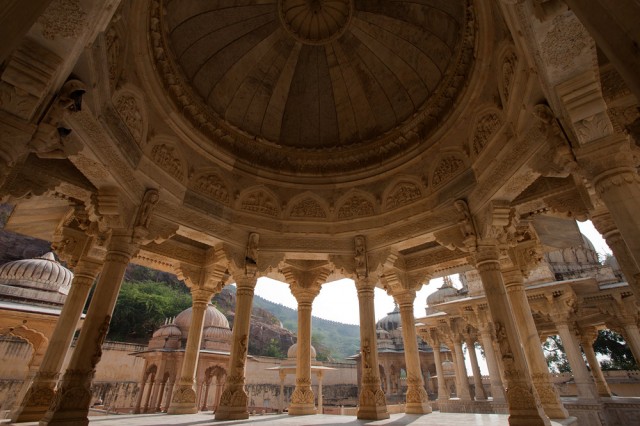
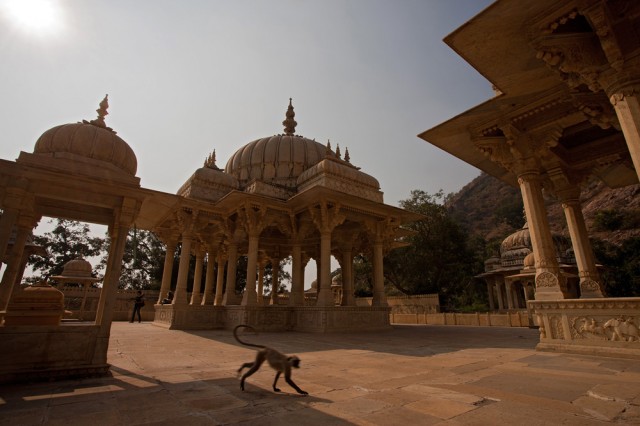
I would not be sure if this structure below in Hawa Mahal, Jaipur, can be classified as chhatris, but it surely seemed to be belong to the same class.
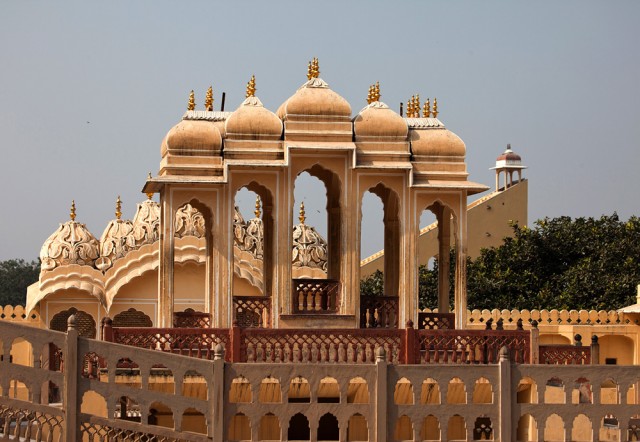
And here is an image from Gadisagar Lake, Jaisalmer, with Chhatris forming small islands. I am told that Jaisalmer too has an assembly of Chhatris which are perhaps prettiest of the lot, though I haven’t visited them.
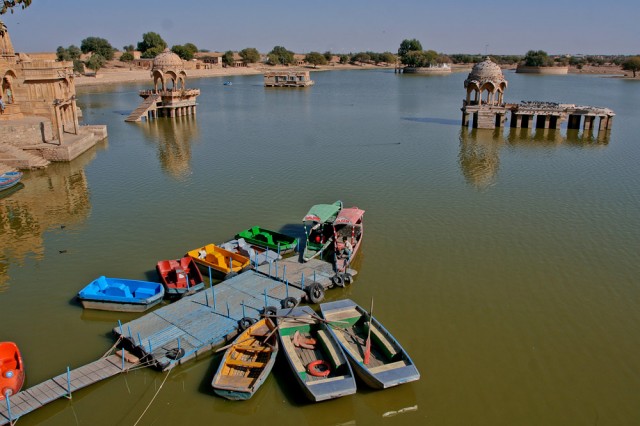
Although Chhatris are an integral part of heritage buildings in Rajasthan, the first time I got charmed by these simple and elegant structures is at the small town of Orchha, Madhya Pradesh. The royal enclosures at Orchha had a generous dose of chhatris decorating the buildings. The cenotaphs of Orchha’s kings, although much different to the canopy-like chhatris we see in Rajasthan, are a delight to see, with their giant sizes and their great location. My visit to Orchha, which begun out of curiosity, extended for good five days with much of it spent admiring the chhatris.
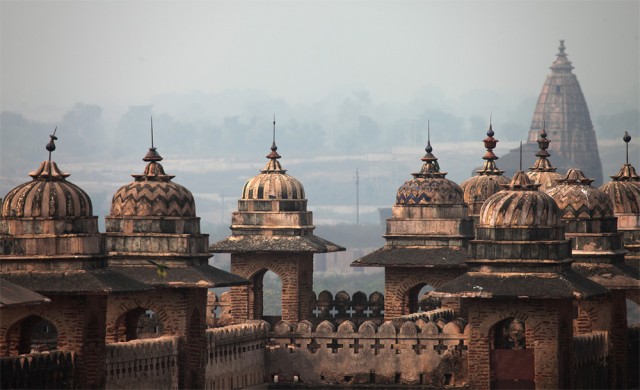
The above photograph is of the royal enclosures inside the fort at Orchaa, and images below are of the royal cenotaphs.
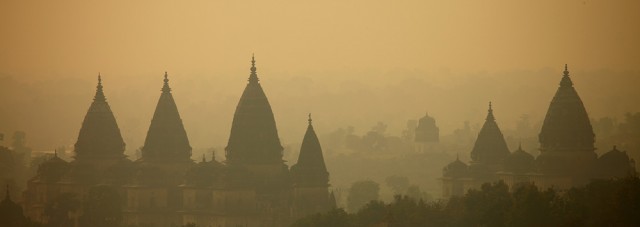
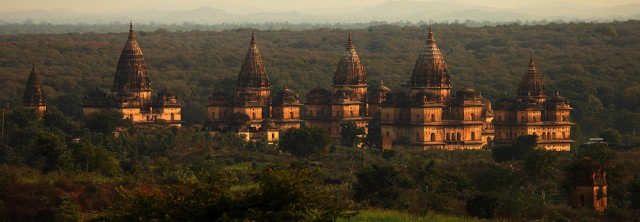
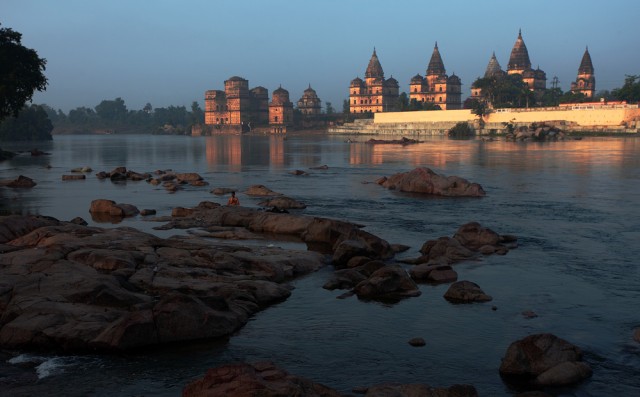
It had been a while since we were hearing from friends traveling to Hampi, and coming back with ‘ooh’ and ‘aah’ about the place, and showing off the beautiful photographs they had taken. After planning it for a while and finally finding some time to spare, we packed our bags and cameras into the cherry red Zen on a Friday morning and headed towards Hampi.
Also see: A brief report on Hampi Utsava(Hampi festival) and Hampi Photo Album
Hampi Information
Hampi is around 350kms from Bangalore. You can take buses or train from Bangalore to Hospet which is a town 20km from Hampi. If you are driving, you may find good roads all way but there was lot of road construction work when we drove there(December 2004). Take NH 4 towards Tumkur from Bangalore and continue driving till Chitradurga. Turn right at Chitradurga towards Hospet and drive till Hospet. Hampi is another 30 minutes drive from Hospet. It took us 8 hours since the road was under construction and should take 6-7 hours otherwise. Too many plying trucks make the road dangerous and I suggest driving daytime.
Places to see
There are lot to see in Hampi. It is good to keep 3 to 4 days if you want to see everything without hurrying, but you can still manage to see a lot in 2 days. Don’t miss the Vithala temple and walk past the river. Read through this article for other places to see. Nearby places of interest includes the huge Tungabhadra reservoir.
It was a pleasant December morning and we started early to enjoy the good weather and escape the city traffic. Within an hour, we were out of the city limits and hit the national highway 4 connecting Bangalore and Pune. The next one-hour was a pleasant drive on the four lane expressway, which is part of the golden quadrilateral project. After a brief stop for breakfast by the roadside, and loosing our way for a short distance in the next town, we got back on track, and drove steadily at three figure speeds for next 2 hours on the smooth and fenced roads. Every now and then we came across trucks lying upside down by the roadside that seemed to tell us to drive safely!
The pleasure of the good roads ended after 3 hours of driving when we hit upon the patches where construction was in full swing. We were reduced to driving on one side of the road, competing with lethargic and overloaded trucks spewing smoke and dust. We drove this way till we reached our diversion to Hampi after Chitradurga. Chitradurga is a historical town with a huge fort that was protected fiercely by the local rulers against the invasion of Hyder-Ali. Songs and novels have been written and movies have been made that glorify the heroics and bravery of the local warriors against the invaders. We did not get to see the fort while driving past, but colorful sunflower fields and tall windmills on the top of wavy hills kept our spirits and enthusiasm on the bad roads. We left the national highway 4 here and took a deviation into the smaller and less crowded Hospet road to Hampi.
A few stops for some pictures and a cup of chai later, we reached Hampi around 2pm – 8 hours since we left Bangalore. After resting and stretching for some time and filling our hungry stomachs, we headed out to start our visits to the temples and monuments. We were armed with maps from 2-3 sources and had planned our itinerary based on the locations. It took us some time to realize that our maps were completely wrong and we were reduced to finding the way by trial and error. And unlike any other place in India, we didn’t get to see many of people walking by the road who could help us with the directions. Luckily, there were plenty of signs put up by Karnataka Tourism Department and we finally managed to get on the right track.
We first went to the Queen’s bath, which as the name says is the bathing place of the royal women. From the size of the structure it sure looked like the royal women would have been spending a good amount of time in their bath! The next stop was the newly excavated underground Shiva temple that was dark inside and seemed to be unattended. From here, we drove into Hampi Bazaar and walked down to Virupaksha temple. It is the tallest structure in Hampi with an 11-storied tower. The Bazaar is a small walkway in the center of the town with shops and restaurants on both sides that lead you right into the entrance of the temple. After paying an exorbitant fee to take our cameras inside, we walked in and took a few pictures of beautiful arrays of pillars and the tall structures.

Pillars of Virupaksha temple
An old man with a long trumpet walked into us and offered to blow it and let us take pictures for a small fee. He got what he wanted and we managed to shoot some pictures. The sun was about to set and we quickly headed out to nearby Hemakuta hill to witness the sunset. After watching skies turn crimson after the sun disappeared beyond the distant hills, we walked down to see a Ganesha statue lit up nicely between an assembly of pillars.
 Hampi By Night… Enclosure of Kadalekalu Ganapa
Hampi By Night… Enclosure of Kadalekalu Ganapa
We setup our tripods and shot some pictures for next 30 minutes. That ended our day’s activities and we returned to our quarters for a quick dinner and retired very soon.
As much as the ruins and historical monuments, Hampi is known for its colorful sunrise and sunsets. We were up early in the morning next day and drove back to Hampi Bazaar to witness the much talked about view of the sunrise from the top of Mathanga hill. After debating for sometime on the rationale in climbing the tall and lonely hill all by ourselves in the darkness of 5am, we finally decided to give a try and slowly climbed up to the top. We were one of the first to be up and were soon joined by a group of three foreign tourists.

Just Before Dawn

As the sun comes out…

The expanse of Hampi and the Tungabhadra river
As we waited, light started creeping into the day giving us a view of the expanse from all around us. There were boulders and boulders covering the hills all around and the river Tungabhadra seemed to have magically made its way between them. The planes below were covered with temples and ruins and where neither of these existed, it was occupied by expanses of plantain farms. Soon the sky turned colorful and we jumped with excitement(look! look!!) at the sight of the rising sun. The eastern sky had turned bright orange and the hills and temples were lit up with the wonderful warm light of the morning. We sat there quietly and watched the beauty of the nature unfold in front us. The misty orange waves of hills arranged neatly with the sun behind them made a fine-looking picture in my eyes that I would never forget.
As the sun was high enough, an enterprising chaiwalla who had carried his tea making gear all the way up to the hilltop offered to make us some tea. A cup of tea and some more pictures later, we walked slowly downhill savoring the beauty of the river and the rocky terrain surrounding it. We noticed during the descent that it was an excellent place for birding too. We spotted a pair of rarely seen coucals, spotted doves, some magpie robins, plenty of parakeets and many more. After giving some more work for our cameras on the way back, we returned to the Bazaar for a filling breakfast and an eventful day ahead.
We had enough places to visit for the entire day. Wasting no ti
me after the bre
akfast, we quickly got ready and headed to Vithala temple complex. The complex is a plane area by the riverside laden with old structures and ruins. We parked near the temple and took the walkway that lead us through king’s balance and the Vishnu temple. There are many old structures on the way and we soon lost track of what is what.

Vithala temple premise

The King’s Balance
A watchman at the Vishnu temple introduced me to some of the structures. He pointed out at a distant rock that seemed to open into a cave and said that it’s the path where Ravana dragged Sita after kidnapping her from Rama. Hampi’s origin has some stories borrowed from mythology as well as history. The hills of Rushyamooka, Hemakoota and Mathanga are where the army of monkeys in the Ramayana were known to have made their habitat. And in the times of Mughal sultanate, local warriors are said to have witnessed a scene of a dog being chased away by a small hare. The event was attributed to the bravery embedded in the soil of the place. On witnessing this, Maharshi Vidyaranya, with his disciples Harihara and Bukka made this land as the base to fight the penetration of the Muslim rulers towards south. This lead to the inception of the Vijayanagara Empire.
We walked ahead enjoying the structures and shooting them as we please, and reached the riverbank. Someone offered to take us back to the Vithala temple on a coracle, which we gladly accepted. The river was calm, and the cool breeze made the ride pleasant even in the mid-day sun. We noticed many carvings on the boulders next to the river. A magpie and some mynas followed our coracle all the way to our alighting point.
The Vithala temple is the most well known structure in Hampi. It is recognized as a UNESCO world heritage monument for its musical pillars and a pretty stone chariot. Each pillar is known to produce a distinct musical note when you knock with your fingers. But a sign says not to touch the pillars, and there are some security persons to ensure that you don’t ignore the sign. I was tempted when I saw a few kids sneaking from behind and enjoying the sounds, but decided not to try it myself. An old tree with spooky branches and no leaves added a strange glamour to the temple. I took more pictures of the tree itself, keeping the temple in the background.
It was turning out to be an exciting day seeing the temples, pillars and ruins all around and we could not be stopped easily. After a heavy lunch at the Bazaar, we rested for a short while and headed out again not miss taking photographs in the evening sun. We managed to spend rest of the day walking though Mahanavami Dibba where the royal functions were held, then to the famous Lotus Mahal and the large elephant stables. The royal elephants sure seemed to have royal stables to while away their time.

At the elephant stables…
Before we knew, it was evening already and we decided to head back to Hemakuta hill to catch the sunset again. We seemed to have got carried away looking at the monuments! We were late to reach the place and only managed to catch a brief glimpse of sun saying goodbye behind the hills.

Rocks around the ruins…

At Lotus Mahal
The next morning, we visited the Pattabhirama temple just behind our hotel. The pillars of the temple made nice patterns of light and shade in the early morning sun. It was amusing to see a studious young man sitting leaning to a pillar and studying a history textbook! This was our last monument in Hampi. We drove out from there and stopped on the way for a quick visit to the Tungabhadra reservoir. The dam is so big that we couldn’t see the other end of the water body. We saw many of water birds including a few herons and a pair of river terns hovering around trying to catch fish.

Inside Pattabhirama temple
We drove back from here to Bangalore stopping for a few breaks in the middle for food and rest. The trip ended with a stop just before Bangalore, by a lake to watch the beautiful sunset and its reflection in the water.














 Hampi By Night… Enclosure of Kadalekalu Ganapa
Hampi By Night… Enclosure of Kadalekalu Ganapa







